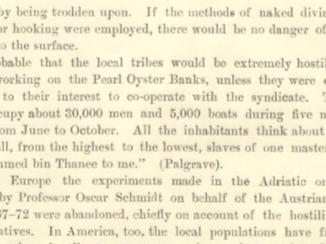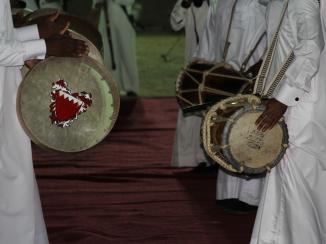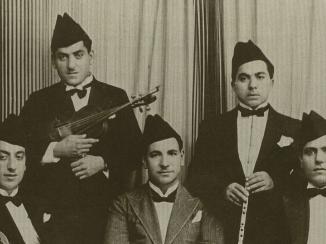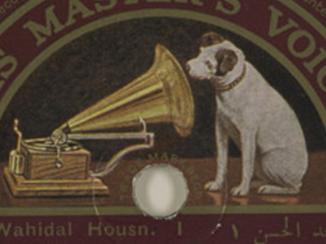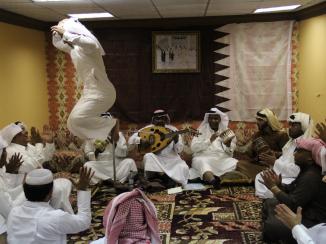Overview
The journalist Sarah Alzouman writes: “Traditional Kuwaiti music is enchanting in the sense that it can evoke the founding chapter of Kuwait's history and tie the native listener inexorably to his or her past.”
Most sources agree that the urban Gulf ṣawt musical genre as it exists today was established in Kuwait by the poet, composer, singer and oud player Abdallah al-Faraj (1836-1901/1903). Although he spent many years in India – he was an “heir to a wealthy merchant family which had emigrated to Bombay” (Simon Jargy) – al-Faraj was born, and he died, in Kuwait. It has to be assumed that for most of his life he played a simple version of the Arabic lute or an ‘Indian lute’; at this time the classical Arabic lute was not yet played in the Arabian Gulf.
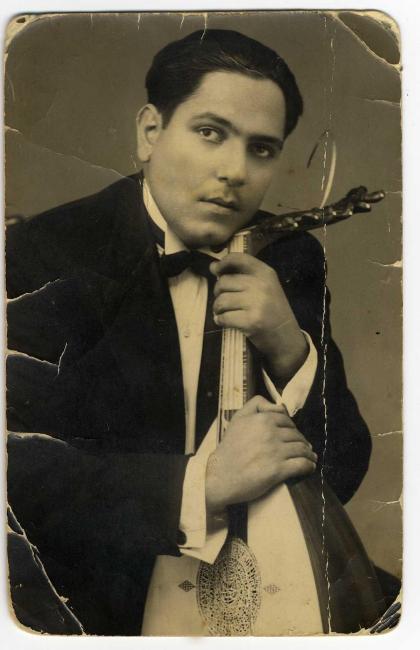
In his lifetime, the ṣawt had already taken the shape that it maintains today: the voice as the ‘main instrument’ in order to express colloquial and classical poetry musically. The main singer accompanied on the oud as the primary melodic instrument, and was supported by the small barrel-shaped drum mirwās, hand clapping and often chorus singers. Only in the 1920s was the violin added in support of the lead singer.
Sawt was the art music of the first urban centres in the Gulf region. This pan-East-Arabic-Gulf genre was created in Kuwait first probably because the country sits at the crossroads of cultural influences. It is squeezed between the sea and the desert, with influences from the land coming from Basrah (presently Iraq), Persia and Saudi Arabia, and those from the sea coming from the Gulf coast, Oman, Yemen and as far as East Africa and India. Influences from India and East Africa on this music need to be investigated further. In any case, ṣawt music was performed alongside the dominant sea music on the trading boats connecting Kuwait to these countries. Since the early days of ṣawt music, there was a strong collaboration between musicians from Bahrain and Kuwait. For many early musical pieces, the origin of the poetry (or melodic lines) can be traced to Yemen or the Ḥijāz region in western Saudi Arabia.
Thanks to the entrepreneurship of the early gramophone recording labels in the first half of the twentieth century, we have a relatively high number of recordings at our disposal today. It seems that these early singers were already regarded as regional stars and were therefore valued enough to be recorded (the same was not true for the sea musicians).
Habib Yammine (Ensemble Al-Umayri CD, 2004) mentions Abdallah al-Faraj’s contemporaries or immediate followers such as Ibrahim ibn Ya’qub, the brothers Khaled and Yousouf al-Bakr (1870/75-1955), Husein al-Zayer and Naser ibn Ya’qub.
Yousouf al-Bakr continued into the twentieth century, recording sixty ṣawt as late as 1953. Other significant ṣawt musicians in the second generation (early twentieth century) consisted of the singer Abd el-Latif al-Kuweiti (also spelled: Abdulatif Al Kuwaiti or Abdul-Latif El-Kouéti, 1901/1904-1975), who was accompanied by the violin player Sami al-Shawa, Mahmoud al-Kuweiti (oud), Hamad Buhuyidi (mirwās), Abdallah Fadala, the Jewish brothers Dawud (oud) and Salih al-Kuweiti (violin), and Ahmad al-Zinjibari from Zanzibar who had settled in Kuweit (Habib Yammine). Important audio documents from the early period of ṣawt are the shellac recordings of the Odeon label with Abd el-Latif al-Kuweiti (supported by Sa‘ūd Al-Mukhayṭa on mirwās). These were issued in 1928 and 1929 and recorded in Baghdad, Iraq and Cairo, Egypt.
The two Kuwaiti musicians Dawud al-Kuweiti (singer and oud player, 1910-1976) and Salih al-Kuweiti (lyricist, composer, violin player, 1908-1986) supported many singers and wrote and/or composed their songs. Both were born in Kuwait, into an Iraqi family from Basra, and became known in the Iraqi music scene from the end of the 1920s and 1930s onwards. The nonagenarian Iraqi music expert Yeheskel Kojaman, for instance, describes Salih as “... for three decades the most accomplished violinist and composer in the country (in Iraq, RK).”
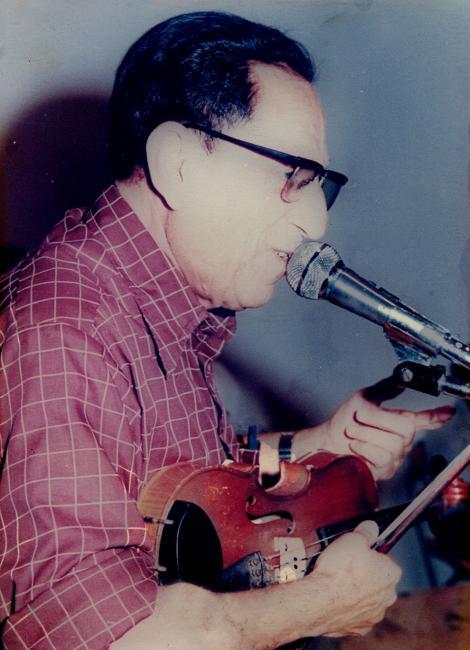
Another remarkable ṣawt singer was the Kuwaiti Mulla Seoud al Koweity (also spelled 'Mulla Saud Al Kuwaiti' or 'Mulla Saud Kowaity'). He lived from 1900 to 1971, having been born into a family of tailors and himself trained as a tailor. His recordings were most likely produced in 1932 in Baghdad. Though he was a well-known singer at the time, there are very few recordings of him. Al Koweity was in close contact with his better known contemporary musicians Dahi Ben Walid (Bahrain; 1896/1898-1941/1951) and Abd el-Latif al-Kuweiti. Although most of the Kuwaiti singers accompany themselves on the oud, in the case of Mulla’s recordings this role could have been taken over by supporting musicians. Most probably he was supported by Dahi Ben Walid, Dawud Saleih al-Kuwaiti, Ali al-Merwas and Hamad Bu Taiban on the violin, oud, mirwās drum, hand-clapping and occasionally chorus.
Starting with Abdallah al-Faraj, those early generations of Kuwaiti singers and musicians – together with musicians from Bahrain – created this unique urban Gulf music genre ṣawt which is still performed in the region today. Many musical pieces were recorded on shellac 78 rpm disc and the majority have survived for the last eighty years. Today, these discs constitute a most valuable source for young musicians in the region.
Listen to:
Playlist Kuwait:

